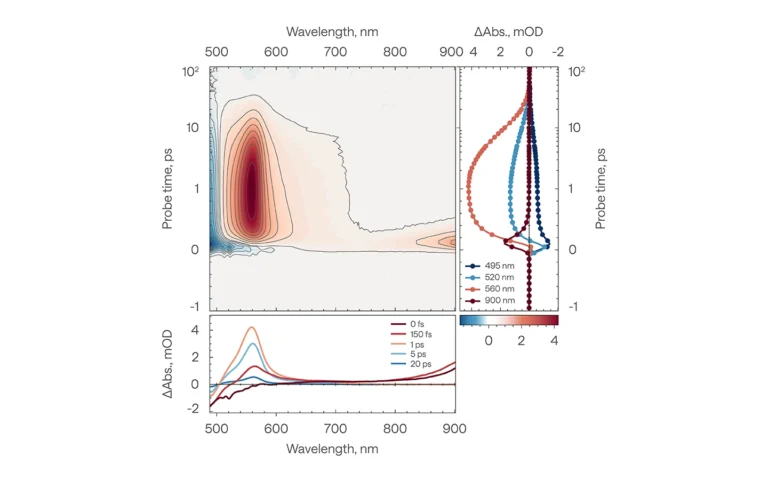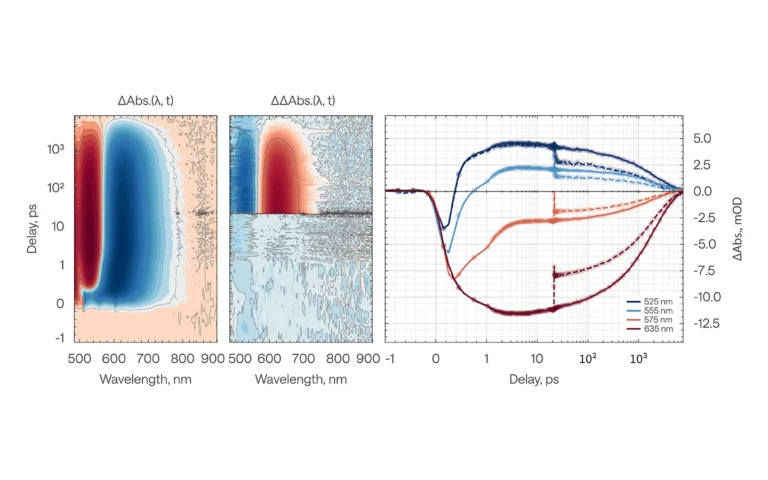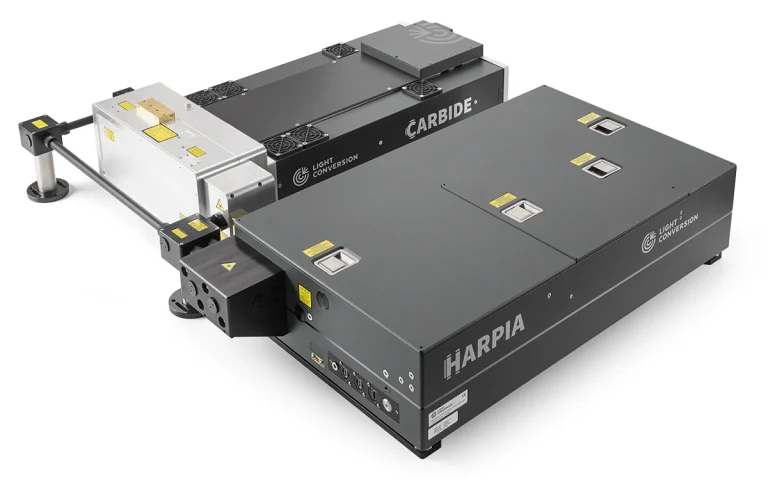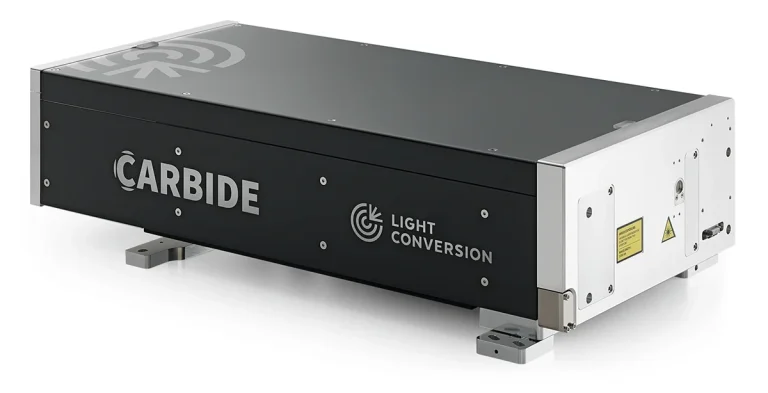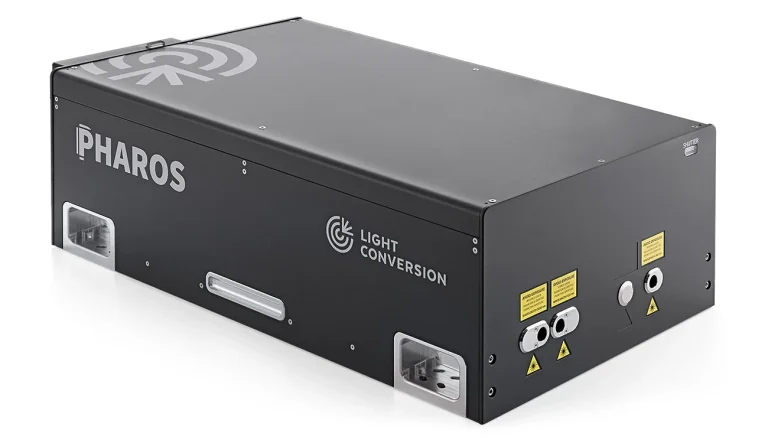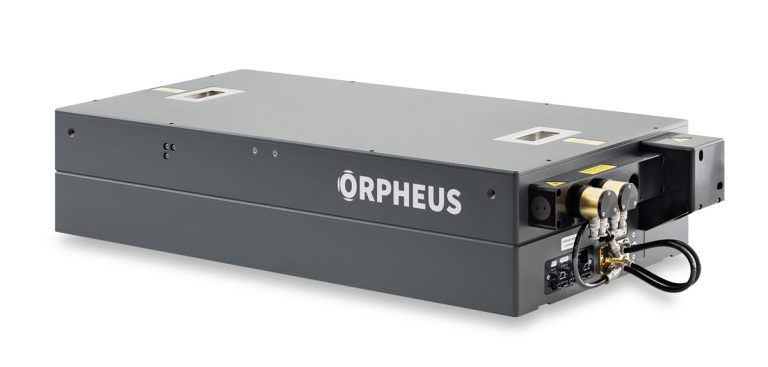瞬态吸收光谱
瞬态吸收(TA)实验能够对光激发样品的随时间变化的吸收情况进行定量表征。该实验需要两束光脉冲:一束是飞秒窄带宽泵浦脉冲,用于激发样品;另一束是延迟的宽带宽探测脉冲,用于测量样品透射率的变化。所得到的差分吸收信号会作为探测波长以及泵浦脉冲与探测脉冲之间时间延迟的函数被测量。
瞬态吸收光谱比稳态吸收光谱或荧光衰减光谱等要复杂得多。它不仅能提供系统激发态的信息,还能给出基态和激发态中所有中间演化瞬态以及非辐射态的相关信息。
在 HARPIA-TA 系统中,瞬态吸收实验可以轻松进行定制,从而更深入地了解光活性系统的超快动力学特性。例如,测量瞬态反射而非吸收,能提供更多关于材料表面光动力学的细节;进行泵浦强度分辨吸收实验,有助于估算湮灭和饱和过程;使用不同的线偏振或圆偏振泵浦脉冲开展瞬态吸收实验,则可以获得分子聚集特性或与分子水平手性相关的光谱。
当瞬态光谱学不足以满足需求时,HARPIA-TA 光谱仪可以进行扩展,分别借助 HARPIA-TB 模块和 HARPIA-TF 模块来开展时间分辨多脉冲光谱学和荧光光谱学实验。
相关期刊
Coherent manipulation of photochemical spin-triplet formation in quantum dot–molecule hybrids
M. Liu, J. Zhu, G. Zhao, Y. Li, Y. Yang et al.
Nature Materials • 2025
Intermolecular naphthylamine cyclization–based synthesis of bandgap-modulated carbon dots for multicolor light-emitting diodes
S. Park, S. H. Lee, Y. Kim, H. Park, G. Kim et al.
Optical Materials • 2025
Modification of mixed-halide quasi-2D perovskites by aminophylline towards efficient and spectrally stable blue light-emitting diodes with low efficiency roll-off
X. Duan, B. Yu, G. Jin, D. Zhang, J. Chen et al.
Journal of Materials Chemistry C • 2025
Architectures of photosynthetic RC-LH1 supercomplexes from Rhodobacter blasticus
P. Wang, B. M. Christianson, D. Ugurlar, R. Mao, Y. Zhang et al.
Science Advances • 2024
Autler-Townes splitting and linear dichroism in colloidal CdSe nanoplatelets driven by near-infrared pulses
Y. Li, L. Wang, J. Wang, J. Zhu, and K. Wu
Science Advances • 2024
Charge Transfer and Intersystem Crossing in Compact Naphthalenediimide–Phenothiazine Triads: Synthesis and Study of the Photophysical Property with Transient Optical and Electron Paramagnetic Resonance Spectroscopic Methods
L. Liu, X. Liu, I. Kurganskii, X. Chen, G. G. Gurzadyan et al.
The Journal of Physical Chemistry B • 2024
Charge Transfer in InAs@ZnSe‐MoS2 Heterostructures for Broadband Photodetection
A. Asaithambi, M. K. Thakur, D. Zhu, N. K. Tofighi, J. S. P. Cresi et al.
Advanced Functional Materials • 2024
Controlling the Phase Distribution of Single Bromide Quasi-2-Dimensional Perovskite Crystals via Solvent Engineering for Pure-Blue Light-Emitting Diodes
S. Park, J. Kim, G. Kim, J. Park, S. Lee et al.
ACS Applied Materials & Interfaces • 2024
Controlling Unintentional Defects Enables High‐Efficient Antimony Selenide Solar Cells
A. Mo, Y. Feng, B. Yang, W. Dang, X. Liang et al.
Advanced Functional Materials • 2024
Dual Functionality of 6-Methylthioguanine: Synergistic Effects Enhancing the Photolability of DNA Nucleobases
Q. Zhou, Y. Hao, J. Jie, S. Wang, Y. Xia et al.
JACS Au • 2024
瞬态吸收光谱
相关期刊
相关产品
瞬态吸收光谱
